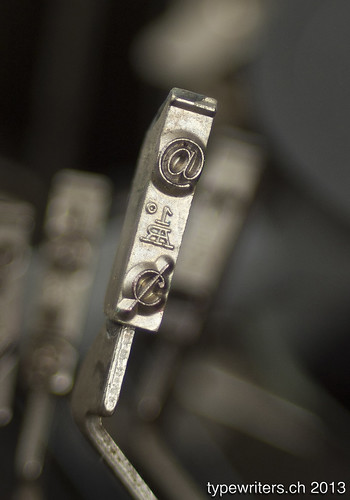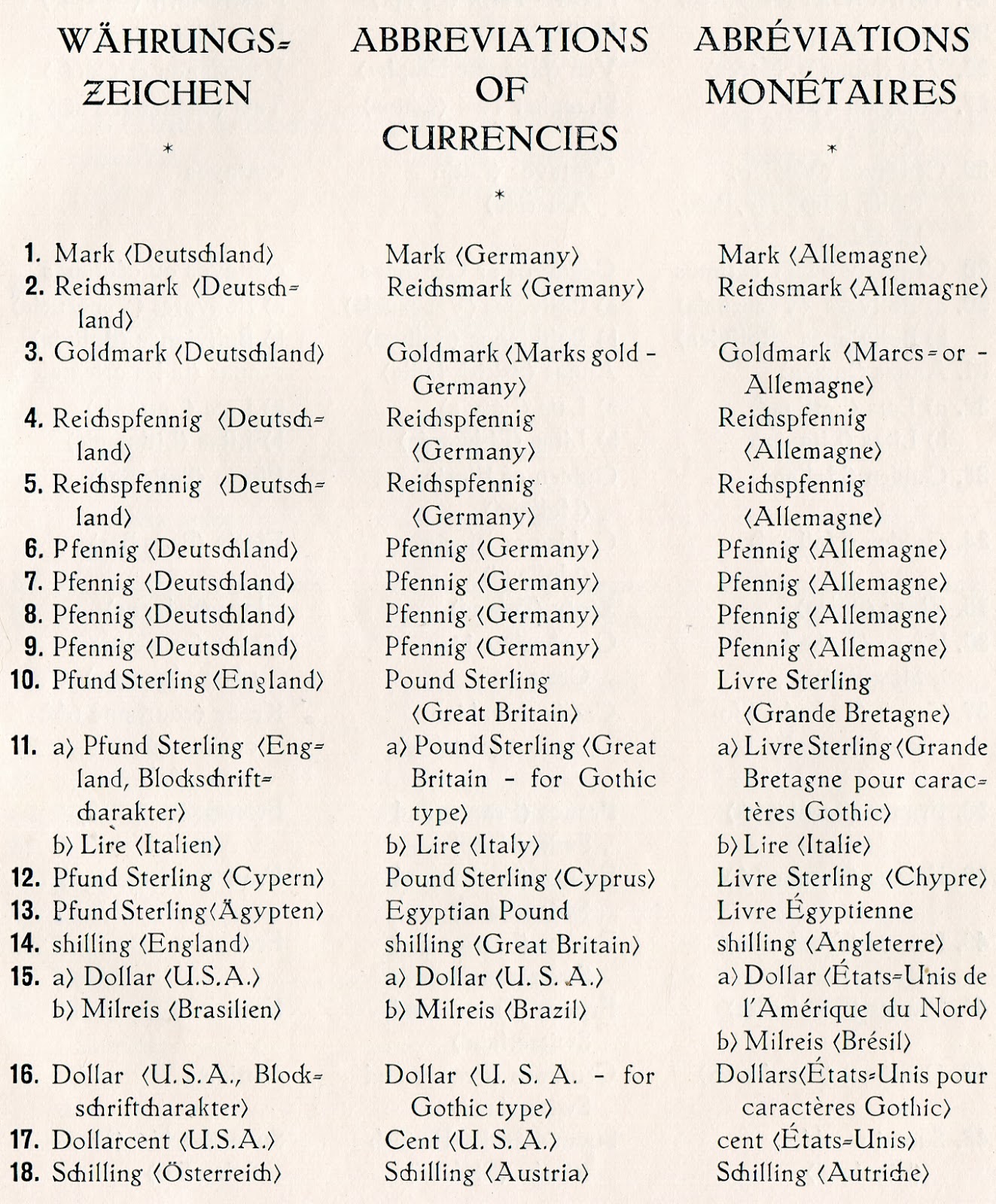What follows is Ransmayer & Rodrian speaking on Ransmayer & Rodrian in their 1940 catalogue, which comes in no less than five languages. I OCR'ed the text, so there might be some mistakes, but the language is original.
Four points seem important in this introduction to the catalogue: firstly, the notion of regular type, which covers the majority of type sold and which is held on stock, as opposed to special type, which are made on demand, and relatively more expensive. Secondly, the listing of RaRo products. Thirdly, the details on the keytops department. Fourth point, a particular Rodrian invention, namely the adjusting prism, is mentioned. We will come back to the adjusting prism in the course of this series on RaRo.
 |
| how to read the RaRo types: LEFT: Ro(drian) 1, RIGHT: Ra(nsmayer) 58. The reason why two brands are used within the same company is that Ransmayer and Rodrian were separate companies in the beginning. |
"Since 1899 our firm is specialising in making typewriter type. Since that time typewriters have been adapted to a variety of requirements and have found an unexpected circulation everywhere. In the same proportion our type making has been perfected and today we are in a position to supply type for all typewriter systems customary in the market and for the most different systems of construction.
The variety of the shapes of type, the different dimensions of their slots and shanks, the sundry "motions" of type and finally the large number of various styles require an extraordinarily "elastic" manufacture and highest experience of our workmen.
Fortunately we have at our disposal a sufficient number of first-class experienced collaborators who do all their possible to satisfy the wishes of our customers with outmost scrupulousness. All possible improvements in the manufacture and the newest theoretic and practical methods and inventions, in order to obtain highest precision and quality, have been employed in getting first class products and we are glad to say that our type are well known the world over for their unsurpassed precision and first class workmanship.
Our stock contains always some millions of regular typewriter type and hardly a day elapses that we do not make new tools to increase our collection of regular type. That's the reason why we can offer a variety of type combinations unequalled by any other type maker in the world. In this way our customers can avail themselves of the advantage of acquiring without delay and without heavy expenses all current typewriter styles in perfect original execution for all typewriter systems on the market. For instance we are stocking about 18 000 sundry· regular type combinations of our Pica style Ro 1. The following pages with their illustrations of our products are intended to convey a total impression of the goods we are manufacturing.
While originally we did not make but typewriter type, the crescent industry of Calculators and Adding Machines required new departments for the manufacture of singIe and double type for calculators, figure bars, figure segments, type levers with engraved numerals and signs, and finally figure wheels.
The increasing demand for keytops led several times to enlargements of our Keytop-Department. The most important articles in this line are: Keytops with metal keyrings, printed keycards, printed keyboardcards half punched out (each keyboard card containing a complete keyboard consisting of ready cut keyprints firmly fixed in the card and yet easily to
push out for use) printed line gauges, keytops of round, angular or oblong shape made of galalith or other plastic substances of invariable colours and with indestructible engravings, printed keycards with celluloid covering, keycaps and keyrings of best materials. All these products are not only made for makers of office machinery, but also for many other industries.
For conveying a full impression of the most current styles to typewriter makers, mechanicians and typewriter sellers and to enable them to give the customers an idea of the styles they may need for their special purposes, this col lection of about 600 sundry specimens will render a good service. These specimens are classified according to the typewriter systems the style in question can be supplied for.
A further specification of 117 sundry styles shows all styles for which type are supplied at the present also with adjusting prism. This type protected by patent in most countries, enable inexperienced workmen to solder sets of typewriter type to their bars in the shortest possible time and yet in perfect alignment. In order to facilitate type ordering a further specification of 2200 sundry sing le signs is reproduced. All these signs can be supplied within shortest time either as regular combinations or as special type in Pica size.
Please pay also attention to the paragraphs "Directions for ordering type" and "Conditions of sale"."
Now, how exactly did one place orders with Ransmayer & Rodrian? Here is the instructions provided by the company:
To be continued.
source: Alfred Ransmayer & Albert Rodrian, Schreibmaschinen-Typen. Liste H, Berlin 1940.












































